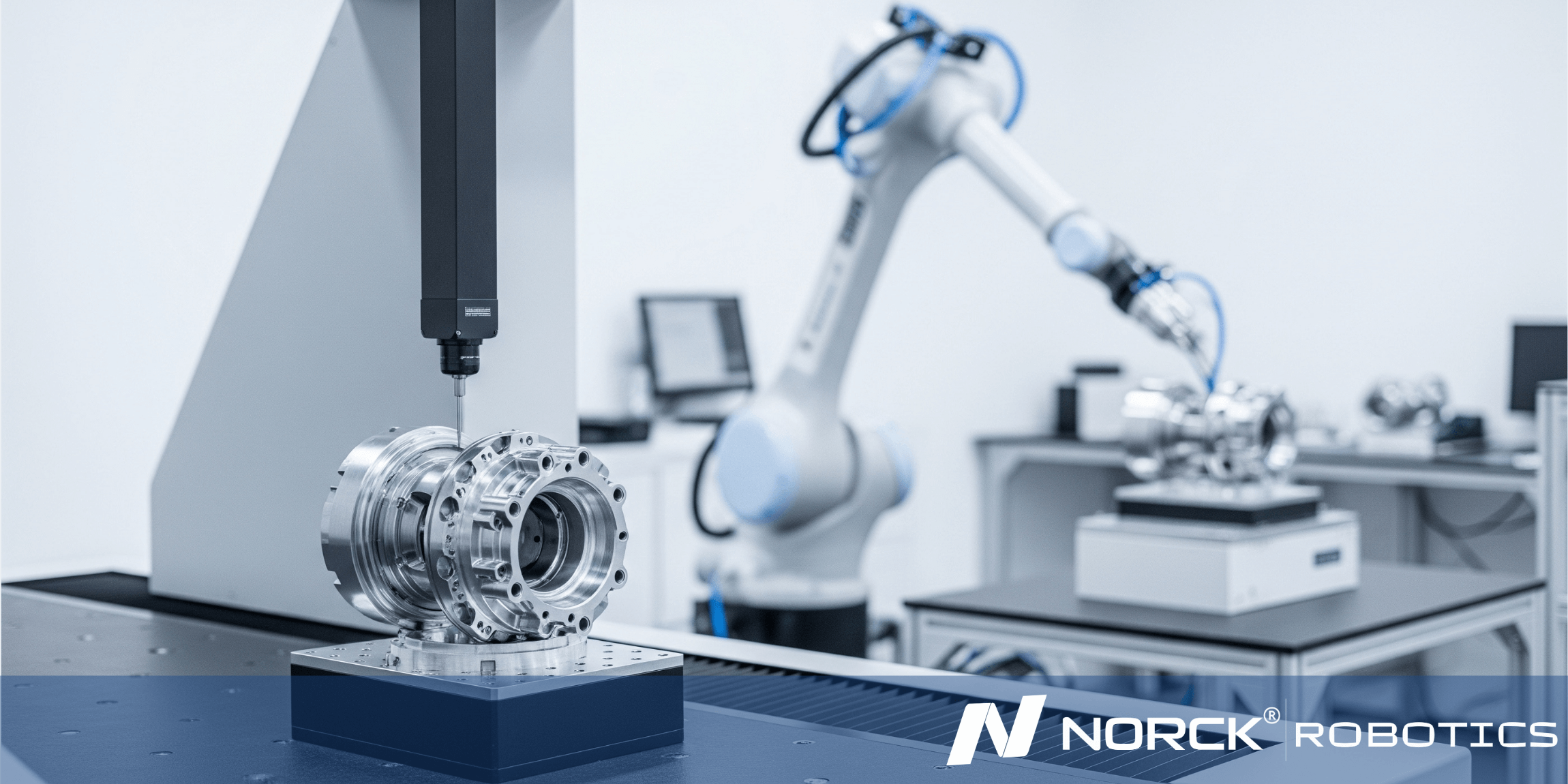

Norck’s GD&T-Verified Fit Service translates the precision encoded in your engineering drawings into assemblies that snap together exactly as intended. By applying rigorous geometric dimensioning and tolerancing at every checkpoint, we confirm that each feature—size, form, orientation, and location—falls within its specified window, preventing tolerance stack-ups that cause misalignments, leaks, or premature wear. The result is a consistently repeatable, interference-free fit that protects performance in motion-critical, sealed, or high-precision applications while slashing rework and safeguarding long-term reliability.
Ready to automate your future? Get a quote from Norck Robotics now!
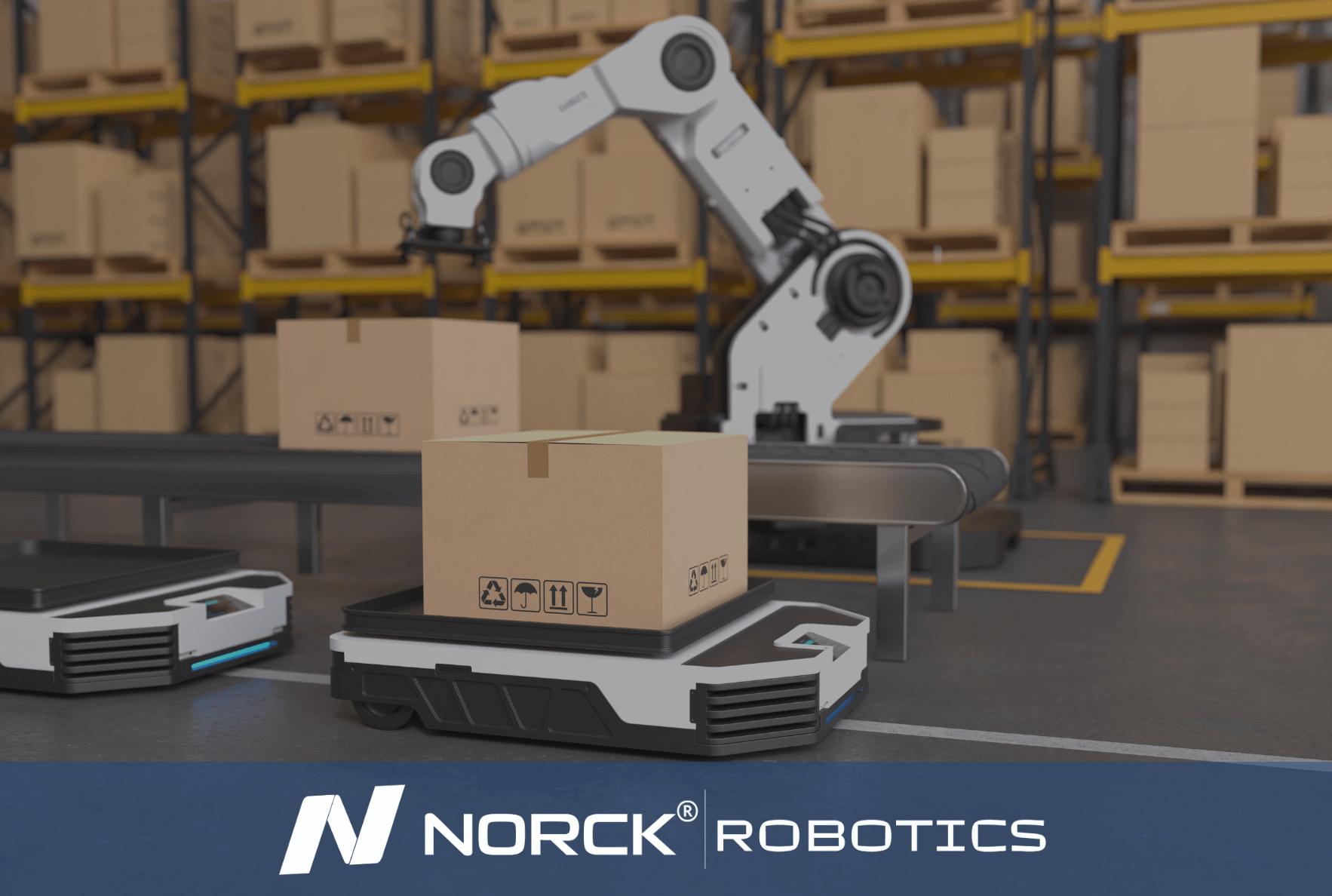
Norck Robotics specializes in providing unique robotic automation and engineering solutions designed to meet the specific operational needs of each client. Our expertise covers a wide range of industries and applications.
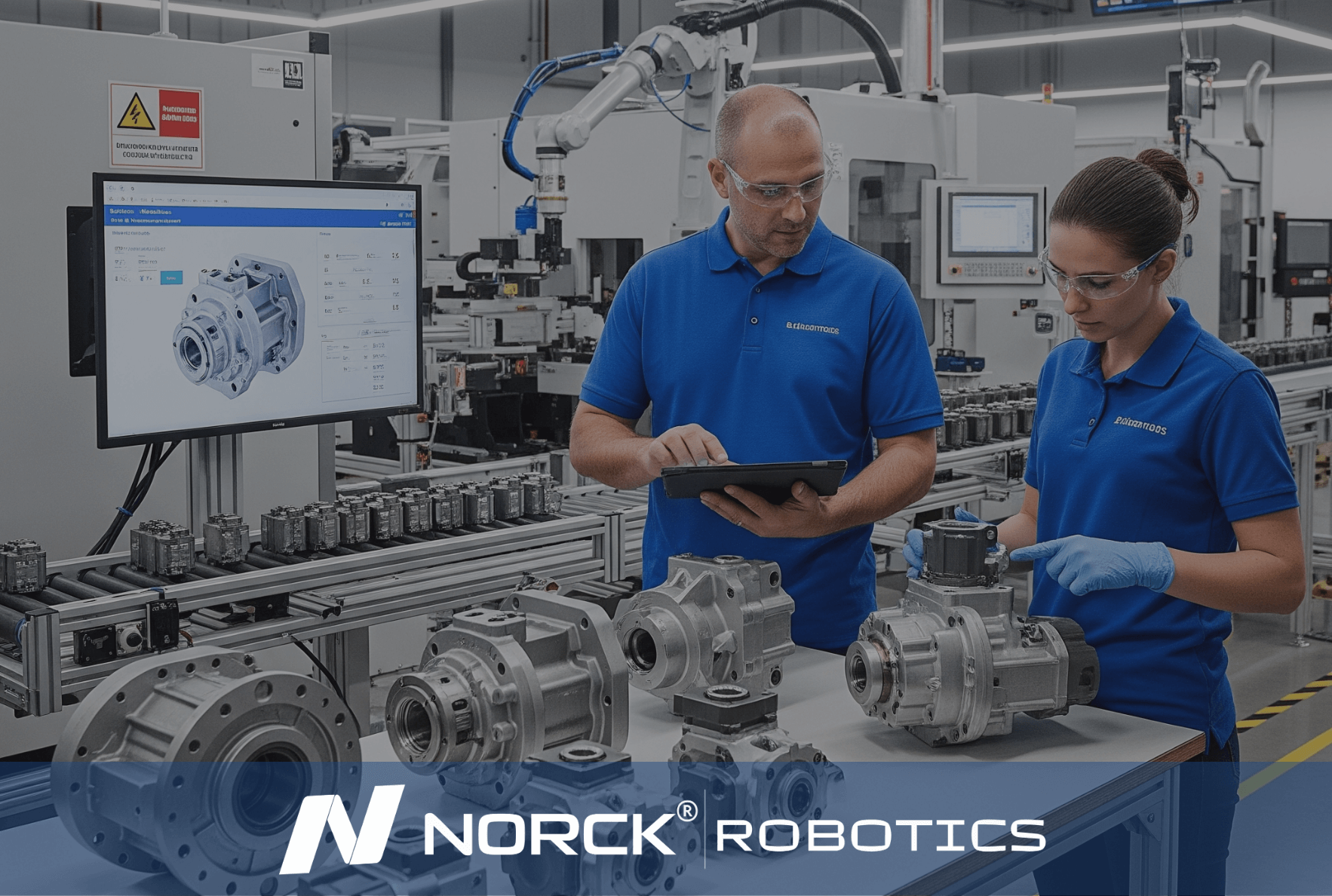
Norck Robotics delivers turnkey robotic automation and engineering solutions tailored to your specific needs across various industries.

Whether you need a single robotic cell prototype or full-scale factory automation, Norck Robotics engineers are ready to collaborate with you to bring your concept to life.

Norck Robotics engineers analyze your existing processes to provide feedback that enhances efficiency, cost-effectiveness, and productivity for robotic integration.
Geometric dimensioning and tolerancing (GD&T) is a system used to describe allowable variation in part geometry during manufacturing and assembly. GD&T prescribes tolerances for size, form, orientation, and location; so, a part can be verified that it fits and functions as intended. There are several advantages of GD&T, which include the ability to communicate design intent, limit interpretation errors, and ensure that assemblies are functional by controlling how parts relate to one another.
Defines acceptable variations in part dimensions and geometry
Ensures parts will assemble properly
Helps ensure product quality and performance
Reduces confusion among design, manufacturing, and inspection teams
Controls the tolerance stack-up to avoid assembly problems.
In manufacturing and assembly, "Verified Fit" means confirming that all components fit together perfectly as designed, using GD&T (Geometric Dimensioning and Tolerancing) guidelines to do so. This step will ensure that all of the assembled components comply with the required tolerances, to an acceptable fit, function and reliability of the system – often especially critical because even a small amount of misalignment can create problems when it comes to a fully assembled product!
Aligns mating parts accurately without interference or gaps.
Confirms accumulated tolerances across many parts create no misfits.
Minimizes chance of assembly errors, rework or field failures.
Enhances final product consistency and reliability.
Absolutely critical in applications involving motion, sealing or tight clearances.

In addition to its own expert engineering team, Norck Robotics provides access to a network of hundreds of top-tier system integrators, robot manufacturers, and component suppliers across the United States, Germany, and Europe.

Working with Norck Robotics reduces dependency on manual labor, increases production consistency, and secures your operations against unforeseen disruptions, quality issues, and fluctuations. This enhances your company's supply chain resilience.
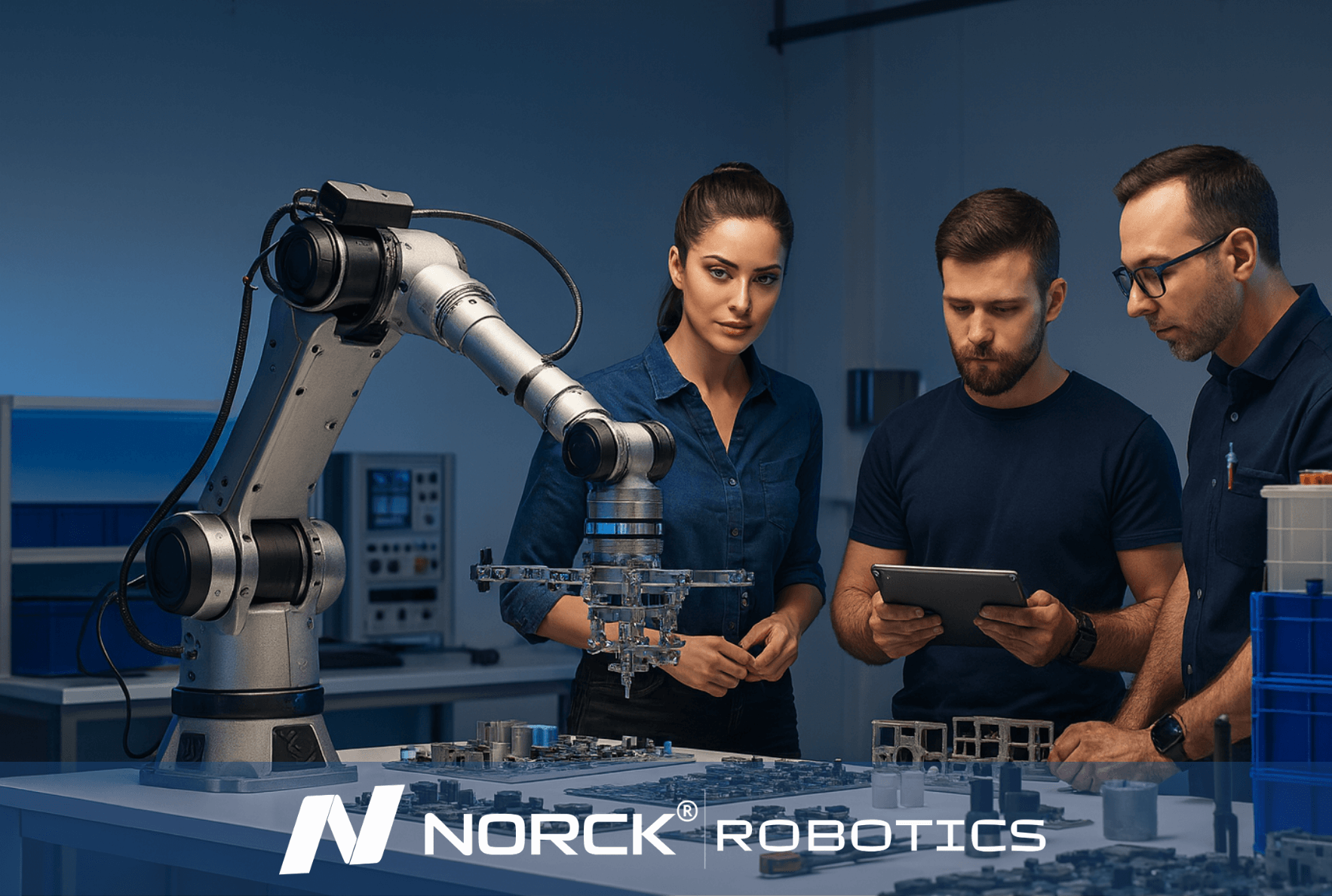
Norck Robotics advances digital automation by developing custom-designed robot grippers, advanced vision systems, and innovative simulation software. With an AI-driven, data-centric approach, it enables smarter system design, optimal performance, and predictive maintenance solutions.
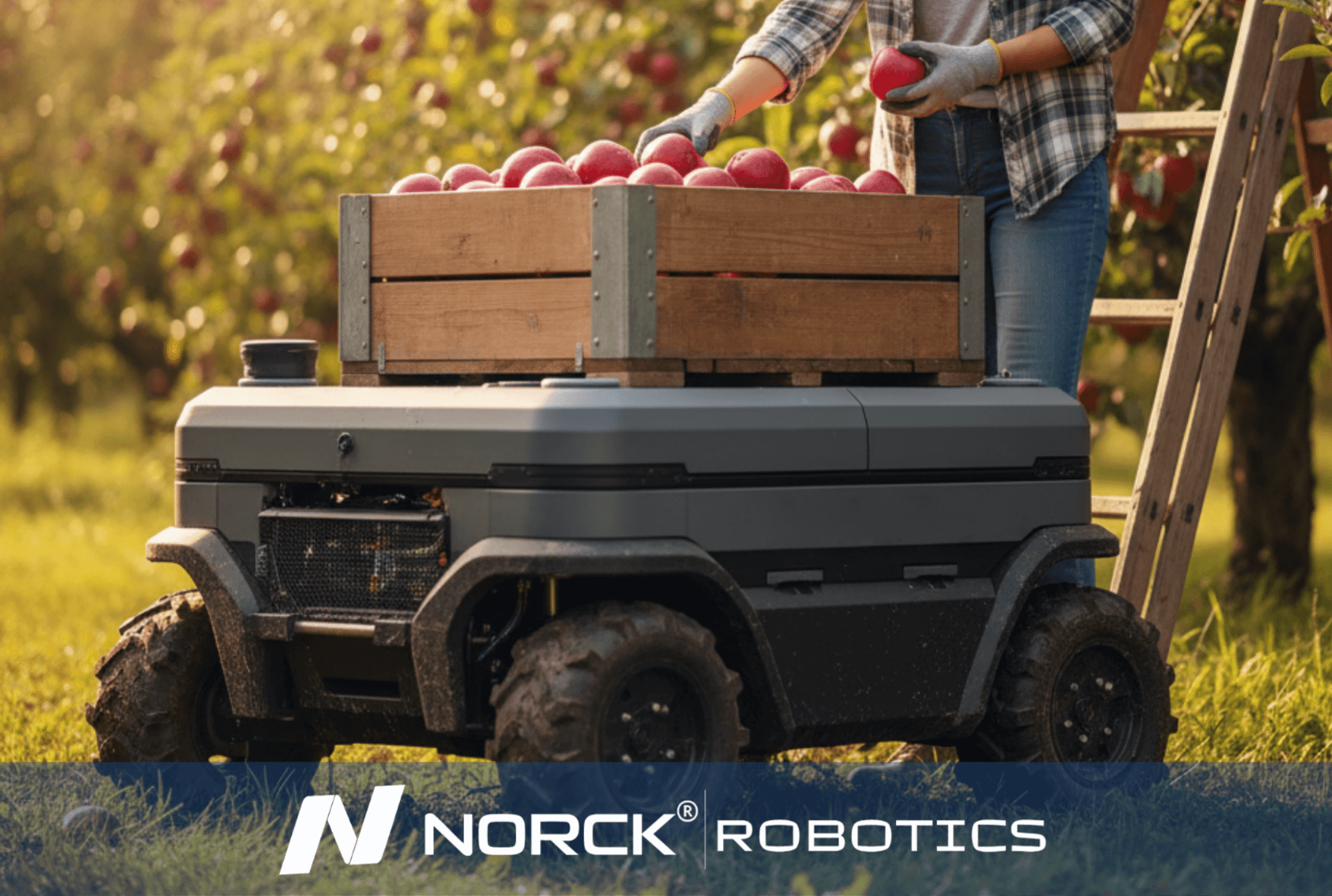
Norck Robotics encourages its partners to be carbon-neutral by reducing energy consumption and material waste through the efficiency of robotic automation, and prioritizes environmentally conscious suppliers.